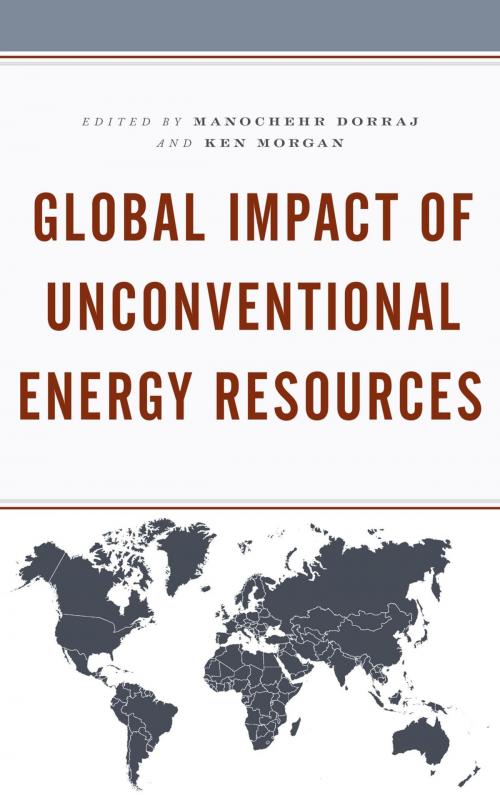Global Impact of Unconventional Energy Resources
Business & Finance, Economics, Economic Conditions, Nonfiction, Social & Cultural Studies, Political Science, International, International Relations| Author: | Anas Alhajji, Stefan Andreasson, Larry Brogdon, Manochehr Dorraj, Tina Hunter, Bijan Khajehpour, Tatiana Mitrova, Isidro Morales, Ken Morgan, Thomas B. Murphy, Silke Popp, Michael Slattery, David Yoxtheimer | ISBN: | 9781498566087 |
| Publisher: | Lexington Books | Publication: | November 26, 2018 |
| Imprint: | Lexington Books | Language: | English |
| Author: | Anas Alhajji, Stefan Andreasson, Larry Brogdon, Manochehr Dorraj, Tina Hunter, Bijan Khajehpour, Tatiana Mitrova, Isidro Morales, Ken Morgan, Thomas B. Murphy, Silke Popp, Michael Slattery, David Yoxtheimer |
| ISBN: | 9781498566087 |
| Publisher: | Lexington Books |
| Publication: | November 26, 2018 |
| Imprint: | Lexington Books |
| Language: | English |
The chapters in this volume represent the latest thinking on the development and exploration of unconventional energy resources in the U.S., Canada, Australia, Europe, Russia, Asia Pacific, Middle East, Latin America, and Africa and shed light on its potential and future prospects in these respective regions. The diversity of thinking about the “shale revolution” is also evident in our case studies. Throughout many countries in Europe for example, there is a strong preference for investment in renewable sources of energy over the fossil fuels. In addition to environmental concerns, the falling price of renewables, have also made them more attractive financially. Consequently, global investment in renewables is outpacing that of fossil fuel two to one. Watching this trend, in 2017, the Chinese government has pledged to invest $360 billion on renewable energy. This would make China the largest investor in development of renewables in the world. Other obstacles to development of shale oil and gas in other parts of the world include, lack of adequate shale resources (Africa), the abundance of conventional energy resources (Middle East and North Africa), high cost of production (Russia, China, Japan) and political opposition to hydraulic fracturing (France and Poland). Despite these sentiments the economic imperatives (providing employment) also play a significant role in determining the future prospects for unconventional energy resources globally.
The chapters in this volume represent the latest thinking on the development and exploration of unconventional energy resources in the U.S., Canada, Australia, Europe, Russia, Asia Pacific, Middle East, Latin America, and Africa and shed light on its potential and future prospects in these respective regions. The diversity of thinking about the “shale revolution” is also evident in our case studies. Throughout many countries in Europe for example, there is a strong preference for investment in renewable sources of energy over the fossil fuels. In addition to environmental concerns, the falling price of renewables, have also made them more attractive financially. Consequently, global investment in renewables is outpacing that of fossil fuel two to one. Watching this trend, in 2017, the Chinese government has pledged to invest $360 billion on renewable energy. This would make China the largest investor in development of renewables in the world. Other obstacles to development of shale oil and gas in other parts of the world include, lack of adequate shale resources (Africa), the abundance of conventional energy resources (Middle East and North Africa), high cost of production (Russia, China, Japan) and political opposition to hydraulic fracturing (France and Poland). Despite these sentiments the economic imperatives (providing employment) also play a significant role in determining the future prospects for unconventional energy resources globally.















